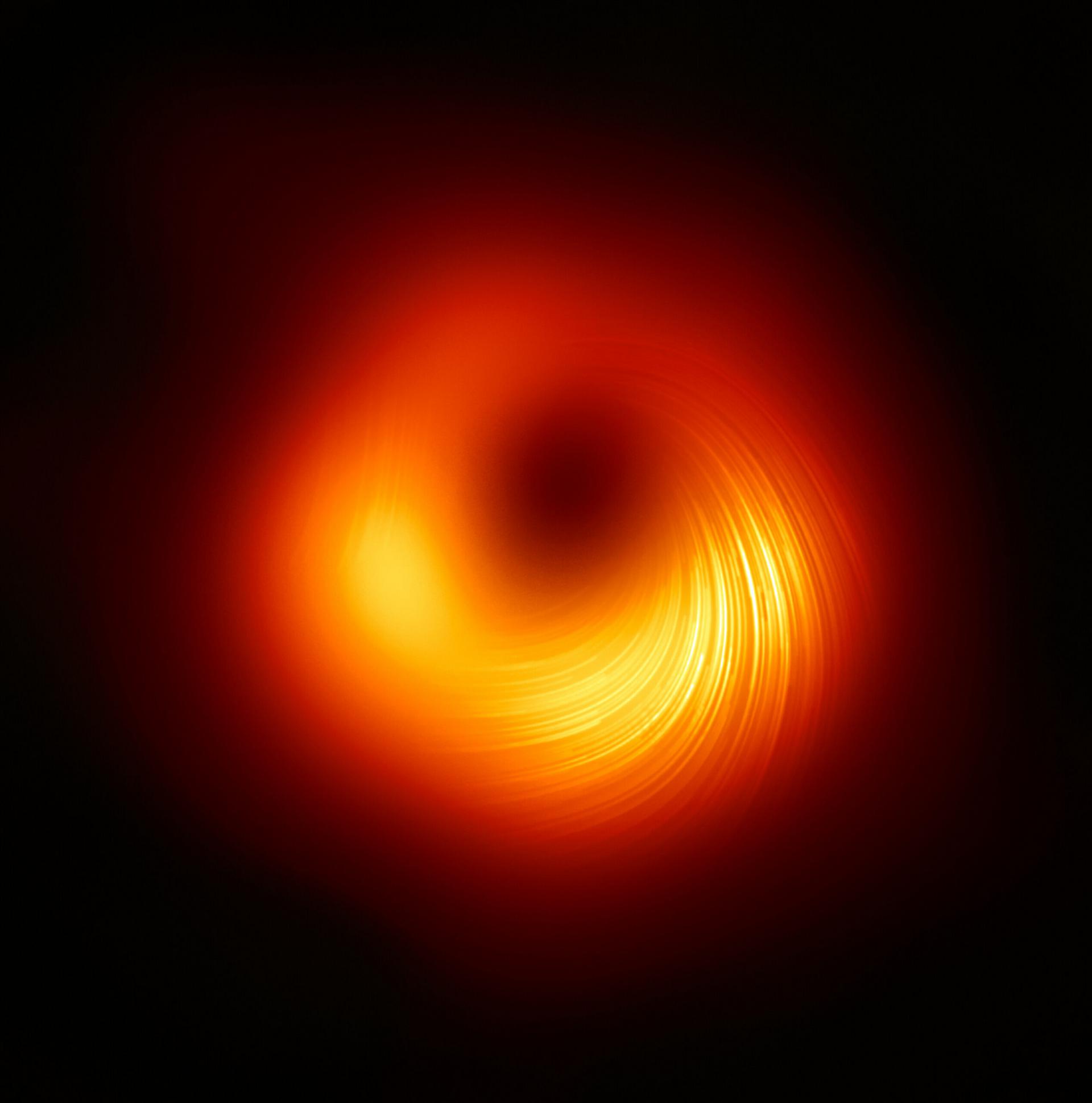The supermassive black hole M87*, which became a global sensation in 2019 when it was first photographed, has again attracted the attention of the world scientific community. Scientists have confirmed for the first time that it spins. The announcement of this discovery was made on September 27. However, how fast the M87* spins is still a mystery.

For more than 20 years, a network of radio telescopes has been observing a black hole located in the very center of the galaxy Messier 87 (M87), located at a distance of about 55 million light-years from Earth in the constellation Virgo. The greatest interest among scientists was caused by a powerful jet of radiation emanating from the poles of the black hole. According to new data, this relativistic jet seems to oscillate like a pendulum and has a stable 11-year cycle. Scientists claim that this is a consequence of the gravitational interaction between the spinning black hole, which is believed to be 6.5 billion times more massive than the Sun, and the accretion disk of matter surrounding it, providing indisputable evidence of its spin.
According to a new study, the jet changes its direction by about 10 degrees every 11 years. The results of this study are consistent with theoretical models developed on supercomputers and help to better understand how black holes form and evolve, turning into the most terrible objects in the Universe.
Black holes and Einstein’s predictions
In 2019, astronomers noticed jets coming out of a black hole closer to us, at a distance of about 8000 light-years from Earth. These jets oscillated for only a few minutes, and these were the fastest oscillations of this kind that astronomers had observed. New data show that the jets of the black hole M87* are moving much slower. But they still correspond to the theoretical predictions made by Albert Einstein in his General Theory of Relativity.
According to this theory, the spinning black hole is so massive that it bends the surrounding space and time inward — this phenomenon is called Frame-dragging. The peculiarity of this effect is that the axis of rotation of the black hole does not perfectly coincide with the axis of rotation around it of the accretion disk from which the black hole absorbs stellar material. This causes the jets of the black hole to oscillate finely, and this was measured in a new study.
Incomprehensible processes of black holes
The specific processes that cause the spin of black holes are still unknown to scientists. The main theory indicates that smaller black holes form by absorbing stellar material through an accretion disk, and this causes them to spin very fast. Over millions of years, they collide and eventually merge, becoming extremely supermassive black holes.
Second-generation black holes, such as M87*, are expected to spin more slowly compared to their younger predecessors. To confirm this hypothesis, researchers need to study the rotation speed of black holes of different sizes.
Earlier we reported how astronomers doubted the veracity of the first photo of a black hole.
According to Space
Follow us on Twitter to get the most interesting space news in time
https://twitter.com/ust_magazine

